I recently discovered that “Astrophotography” means stumbling around on the driveway in the dark, trying to balance the awkwardly top heavy weight of a tripod mounted telescope, and taking pictures of either the Copernicus… or a backyard yard gopher excavation, depending upon where in the out of control arc of “Go To” software the camera’s shutter was released. What does all of this have to do with the Ruger SR9c? Plenty. When the telescope fell over and broke one of its tripod legs, the Ruger was the gun I specifically selected to put it out of its misery. Just kidding… No I’m not.
OK… What can I say about the Ruger SR9c?
I don’t know what group internal to Ruger is responsible for the appearance and commercial packaging of their products, but whoever did the work on the SR9c and LCP deserves a raise. In a sea of ugly Glocks, utility SIGs and the yawn appeal of S&W, these Ruger autoloaders are a standout. Beyond the functional form follows function touches, the matte black finish goes well with the matte black fiber filled nylon grip frames, giving the guns a look of… martial purpose with a total absence of both utility clunkiness and video gamer fantasy. Someone sat down with a clean piece of virtual CAD paper and said, “If I were a concealable duty or civilian carry gun, what would I look like?”.
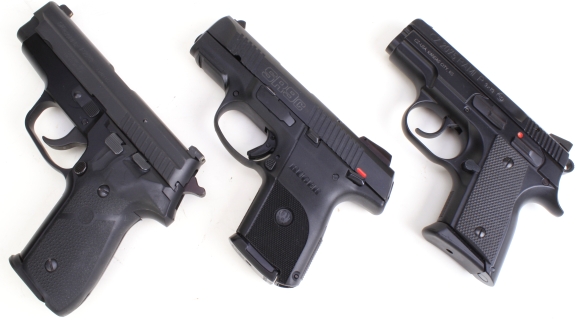
The SR9c fits a significantly smaller envelope than a compact SIG P229 and less than 2/10ths of an inch longer and the same height as the diminutive CZ 2075. Within the same group the Ruger SR9c is the most narrow of the group; both the SIG and CZ are 1.120″ and 1.130″ at the slide, respectively, where the Ruger is only 0.985″. At the grip, the SIG is 1.370″, the CZ is 1.300″ and the SR9c is 1.270″.
The Ruger SR9c’s more compact dimensions help with concealed carry, but don’t carry a penalty of lesser capacity. The Ruger holds either 10+1 or 17+1 rounds, dependent upon magazine selected. Both types are supplied in states where legal, two 10 round magazines in others. The SR9c weights more than half a pound less than the SIG and 2.5 oz less than the CZ 2075
General specifications:
|
Manufacturer
|
Ruger |
| Model |
SR9c |
| Origin |
USA |
| Type |
Semi Auto Striker |
| Caliber |
9mmx19 (Luger) |
| Capacity |
10+1 or 17+1 |
| Barrel/Slide |
Stainless/Carbon Steel |
| Grip Frame |
Glass filled Nylon |
| Finish |
Matte Blue |
|
Weights & Measures
|
| Overall length |
6.850″ |
| Height |
4.610“ |
| Grip Width |
1.270 |
| Sight Radius |
5.500″ |
| Barrel Length |
3.500″ |
| Weight – Empty |
23 Oz. |
|
Price
|
| MSRP |
$525 |
| Typical |
$424
|
Our feature presentation…

Good thinking. Everyone loves freedom of choice. The Ruger hard case contains a 10 round magazine with a floorplate finger extension, a non-extended floorplate cover and a 17 round extended grip magazine in states where legal. Two 10 round magazines are packed in there where the high capacity magazine is not legal. The magazine release is ambidextrous. Another shooter option – By pushing through the pin at the heel of the grip, the backstrap can be removed and reversed, changing the backstrap contour from flat to arched. Nifty.
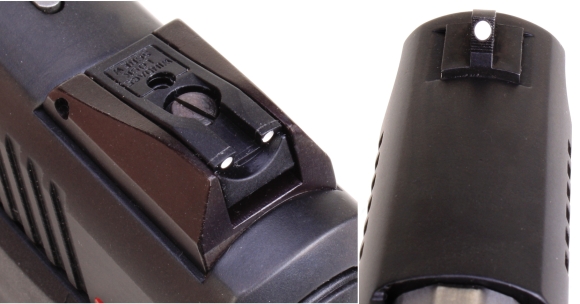
The sighting systems is clean; low profile, three dot white and fully adjustable for both windage and elevation. Both front an rear sights reside in dovetails, with dot planes precisely 5.5″ apart. The front ramp is serrated to reduce reflected light. A quick look at Ruger’s on line store and Brownells suggest there are two or three million alternatives for those who don’t like to see spots, even if it is only three of them. Fiber optics, Tritium and hybrids types of both are available in the range of $50 – $80. Personally, I’d spend a lot of shooting time with the factory sights before making a change as they are very good as is.. There is also an integral accessory rail on the grip frame’s dust cover that permits mounting of popular light and laser sighting accessories.

The fiber filled nylon grip frame is just that, a grip frame. The parts that take a beating in use are stainless steel, both the cam block and fore and aft slide rails. The fire control pieces are arranged into modular assemblies for strength of design and to facilitate ease of service.
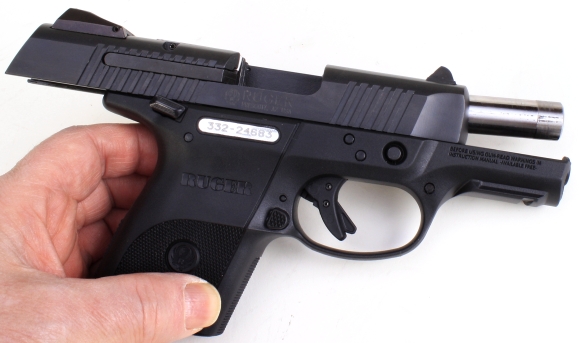
The Ruger employs a camming locking scheme to lock the gun up solid when fired and to drop the breech end of the barrel after firing to allow the slide free passage. The SR9c has no separate barrel bushing, like 99% of the autoloaders made these days. However, a 0.400″ length of the barrel’s muzzle end is slightly oversize; 0.575″ compared to 0.566″ specifically. The barrel port in the front of the slide is actually oblong in shape, 0.005″ larger than the barrel at the vertical ends and less than 0.002″ larger on the horizontal plane. That leaves enough clearance to prevent vertical barrel bind as it is cammed up and down during cycling, but the closest side grip when locked up for accuracy.
Safety features…
Yeah, I know some people like to live dangerously, but I prefer to be in the group with an average life span of 126 years. The Ruger has a number of safety features and cues to benefit those in my longevity ambitions, or anyone who finds themselves in an incredibly stressful confrontation, with their heart working overtime, adrenaline levels through the roof and a need to be working with a reliable piece of equipment that will assure the proper outcome in a life or death situation.
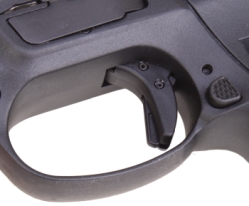 Trigger Safety and Firing Pin Block:
Trigger Safety and Firing Pin Block: The SR9c is an improved striker design. When the slide closed the striker is partially cocked, the trigger safety must be depressed before the trigger can be pulled fully aft to finish cocking the striker, releases the striker block and disengages the internal trigger safety before releasing the striker to fire the pistol. The trigger pull on this example measured 5lbs 10oz, and it was crisp, nut the rubber band trigger pull normally associated with a striker.
If the little trigger safety tab that is embedded in the trigger is not depressed, the trigger will not budge. These features are designed to prevent the gun from firing without deliberate shooter intent to fire the gun. Dropping the gun or anything other than direct face contact with the trigger over the full pull will not result in discharge.
 Ambidextrous thumb safety:
Ambidextrous thumb safety: The Ruger SR9c’s thumb safety prevents its trigger from being pulled and it locks the slide closed. Operation is a simple rotate up for on and down for off. The thumb safety operates with isolated thumb movement and the slide stop and magazine release are within an easy to reach 1 3/4″ radius of the hand’s web.
 Striker Status indicator:
Striker Status indicator: The back of the striker cannot be seen peeking out of the striker cover unless it is semi-cocked. Status can be determined with a quick glance and without moving the gun’s muzzle away from a target.
Loaded Chamber Indicator: There is a loaded chamber indicator that protrudes from the slide when a round is in place. Not subtle, in fact, when exposed the sides of the tab are bright red.. but then who needs a subtle warning? The Ruger also has a magazine disconnect to prevent the gun from firing if no magazine is inserted, even if there is a loaded round in the gun’s chamber.

I’ve heard the theoretical arguments for magazine disconnects and I know they are mandated by a couple of states that have seceded from the Union, so to speak, but I honestly can’t see the practical circumstance where they serve a purpose. I don’t put the inclusion of this device on Ruger, as much as I do on heavily applied political pressure and I honestly see as few practical circumstances where its elimination would yield a practical advantage outside of having a full chamber so you don’t get popped during the six and one half milliseconds required to make a magazine change. As yes, the feckless stuff message board discussions are made of…
Conclusions… so far
I’d like to begin by writing something interesting. So… “Something interesting”. Whew! I feel much better now. Breath in and breath…
The SR9c is one more example of how much Ruger is evolving these days. Their guns have gone from utility bland to something quite special in form and performance. The little Compact feels a bit like my favorite Officer’s Model 1911 in balance and heft, even though the Ruger isn’t even in the same weight ballpark. The SR9c fills my hand and feels substantial in a way that gives a shooter confidence. The workmanship is some of the best I’ve seen lately from Ruger and a lot better than many of the other premium brand firearms I’ve shot over the past couple of years.
The recoil spring is a tad stiff, but this is more of an issue with all short barrel guns that have to manage slide mass. The slide serrations are well placed and they make for an excellent gripping surface. The molded checkering is sharp, but not cheese grater sharp and it makes for a good grip on the compact firearm gun. The finish is clean, very dark and very durable. It should withstand a lot of holster rub and handling.
It is an accurate gun, with a very natural point, particularly with the small finger extension in place. With the extended grip magazine, I could see shooting for several days without running out of ammo when it counts… Although 10+1 shots out of the small magazine almost duplicates the capacity of those old western movie revolvers that seemed to shoot all day without a need to reload. During live fire the gun was rock solid reliable; no jams, stovepipes, failures to feed or any of the other popularly used terminology when an autoloaders doesn’t reliably cycle.
I decided to put together a part II because I believe there is as much of a story in live fire performance as there is in the mechanical design execution, so we’ll take a look at shooting, accuracy and handload performance next installment.
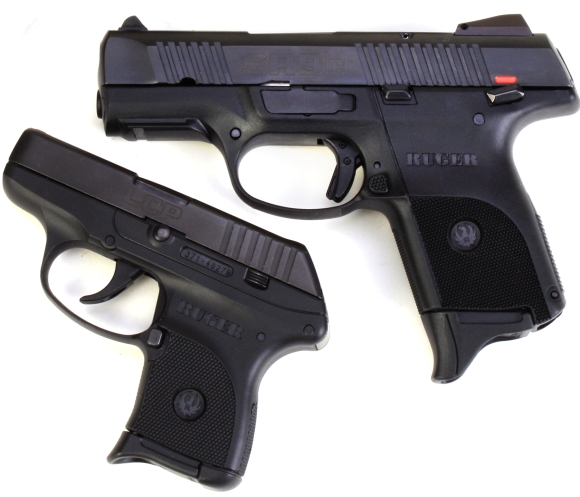

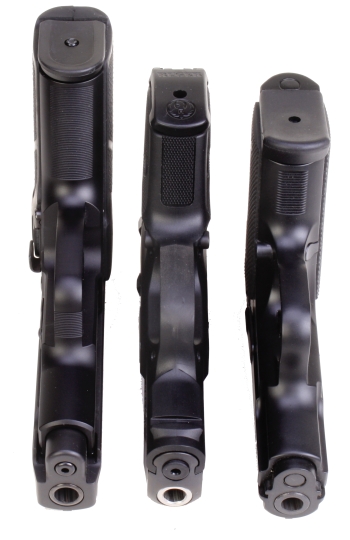




 Trigger Safety and Firing Pin Block: The SR9c is an improved striker design. When the slide closed the striker is partially cocked, the trigger safety must be depressed before the trigger can be pulled fully aft to finish cocking the striker, releases the striker block and disengages the internal trigger safety before releasing the striker to fire the pistol. The trigger pull on this example measured 5lbs 10oz, and it was crisp, nut the rubber band trigger pull normally associated with a striker.
Trigger Safety and Firing Pin Block: The SR9c is an improved striker design. When the slide closed the striker is partially cocked, the trigger safety must be depressed before the trigger can be pulled fully aft to finish cocking the striker, releases the striker block and disengages the internal trigger safety before releasing the striker to fire the pistol. The trigger pull on this example measured 5lbs 10oz, and it was crisp, nut the rubber band trigger pull normally associated with a striker. Ambidextrous thumb safety: The Ruger SR9c’s thumb safety prevents its trigger from being pulled and it locks the slide closed. Operation is a simple rotate up for on and down for off. The thumb safety operates with isolated thumb movement and the slide stop and magazine release are within an easy to reach 1 3/4″ radius of the hand’s web.
Ambidextrous thumb safety: The Ruger SR9c’s thumb safety prevents its trigger from being pulled and it locks the slide closed. Operation is a simple rotate up for on and down for off. The thumb safety operates with isolated thumb movement and the slide stop and magazine release are within an easy to reach 1 3/4″ radius of the hand’s web. Striker Status indicator: The back of the striker cannot be seen peeking out of the striker cover unless it is semi-cocked. Status can be determined with a quick glance and without moving the gun’s muzzle away from a target.
Striker Status indicator: The back of the striker cannot be seen peeking out of the striker cover unless it is semi-cocked. Status can be determined with a quick glance and without moving the gun’s muzzle away from a target.
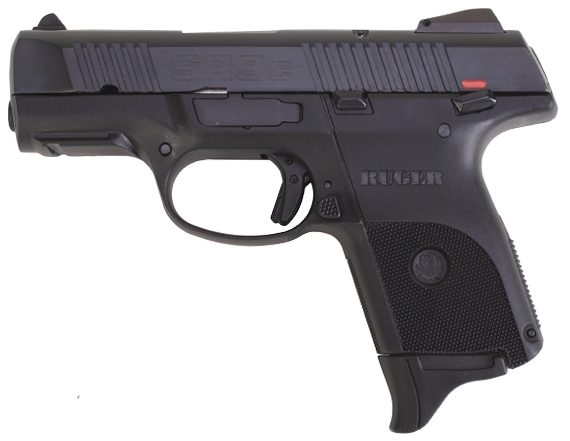

Email Notification